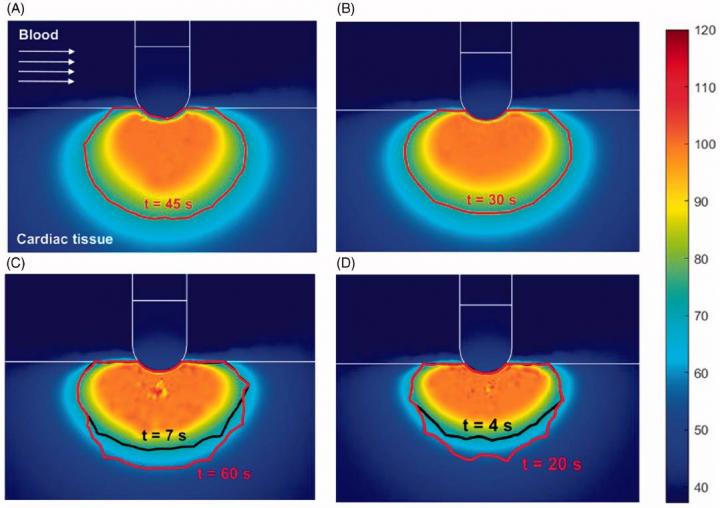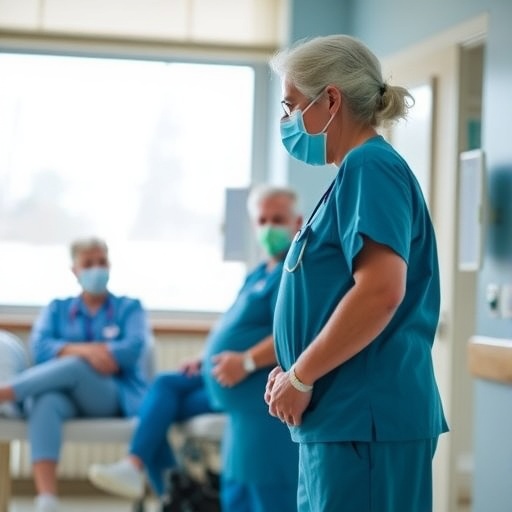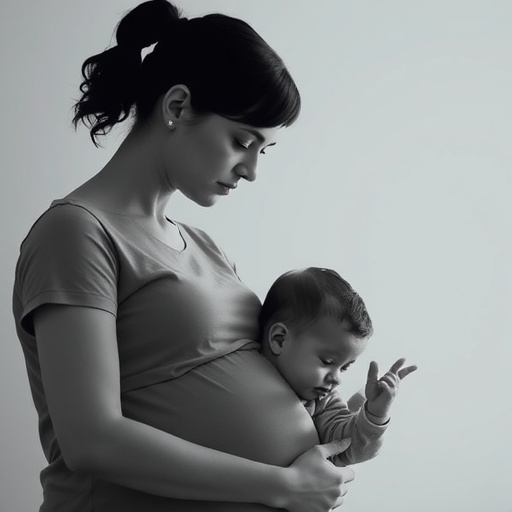So demonstrates research resulting from the final year project on the bachelor’s degree in Biomedical Engineering by Sergi Coderch, supervised by Ana González Suárez and Oscar Camara, researchers with the PhySense research group

Credit: Sergi Coderch
An article published in International Journal of Hyperthermia proposes a more effective protocol for the treatment of cardiac arrhythmias when applying radiofrequency energy at the site of the arrhythmia by catheterization. The research results from the final year project (TFG) on the bachelor’s degree in Biomedical Engineering by Sergi Coderch Navarro, supervised by Ana González Suárez and Oscar Camara, researchers with the PhySense group of the BCN MedTech Research Unit at the UPF Department of Information and Communication Technologies (DTIC). Sergi Coderch Navarro defended his TFG in July 2019 and was a runner-up in the 2019 Gemma Rossell i Romero Awards. Currently, Ana González Suárez is a postdoctoral researcher at the Translational Medical Device Lab (University College Hospital Galway) within the National University of Ireland Galway.
Eliminating arrhythmias using radiofrequency energy
Cardiac ablation using radiofrequency energy is a minimally invasive procedure used for the elimination of arrhythmias. A catheter is inserted via a vein or an artery in the leg as far as the location of the arrhythmia in the heart. Then, energy is applied via the tip of a catheter so eliminate the arrhythmia just by heating the area. It is important to note that this kind of energy does not cause nerve or muscle stimulation.
During the intervention, clinical complications may arise due to excessive heating of the treatment area. There is no system in the clinical practice to predict or detect them
Although it is a minimally invasive treatment, during the intervention, clinical complications may arise due to excessive heating of the treatment area (exceeding temperatures of 100?C). Currently there is no system in the clinical practice to predict and detect these clinical complications and neither is the optimal protocol for the application of power known (i.e., appropriate power and time to apply the catheter to eliminate the arrhythmia) without causing excessive heating of the treated area.
Complications can be significant. One such complication is known as “steam pops”, gas bubbles that form in the heart tissue causing the water in the tissue to turn into gas. These gaseous bubbles can burst, perforating the wall of the heart resulting in the death of the patient.
A mathematical model provides a new, more effective treatment protocol
Current protocols apply low power (20-30 W) over a long period (45-60 s), but a new energy application protocol has emerged recently called high-power in short-duration (HPSD), which applies very high powers (70-90 W) in a short time (4-7 s) to see if it is safer and more effective, i.e., whether it is able to minimize clinical complications while maintaining its effectiveness at eliminating the arrhythmia.
The new HPSD protocol is more effective than conventional ones currently used in the clinical practice to achieve shallower but extensive lesions
In his TFG, Coderch Navarro decided to build a three-dimensional mathematical model that simulates a commercial catheter used in the clinic in order to compare the safety and efficacy of conventional protocols with the new HPSD protocol. “The model has been solved numerically using the finite element method (FEM). The results of the simulations have been validated by experimental studies. Having validated the model, further simulations were carried out to evaluate situations that cannot be assessed (or are practically impossible to assess) experimentally, like for example, taking into account the different positions of the catheter on the tissue”, Coderch Navarro explains.
And, the first author of the study adds: “The results suggest that the new HPSD protocol is more effective than the conventional ones currently used in the clinical practice to achieve shallower but extensive lesions, which are optimal for isolating the pulmonary veins and avoiding the risk of damage to the oesophagus”.
The authors conclude that this study is a first step to guiding clinicians as to which is the most suitable protocol, depending on the position of the heart arrhythmia and the most appropriate orientation of the catheter. Although there is still a long way to go, this research has responded to one of the hot potatoes in the clinical practice of cardiac radiofrequency ablation.
###
Related work:
Sergi Coderch-Navarro, Enrique Berjano, Oscar Camara, Ana González-Suárez (2021), “High-power short-duration vs. standard radiofrequency cardiac ablation: comparative study based on an in-silico model”, International Journal of Hyperthermia, 38:1, 582-592, DOI: 10.1080/02656736.2021.1909148
Media Contact
Núria Pérez
[email protected]
Original Source
https:/
Related Journal Article
http://dx.




